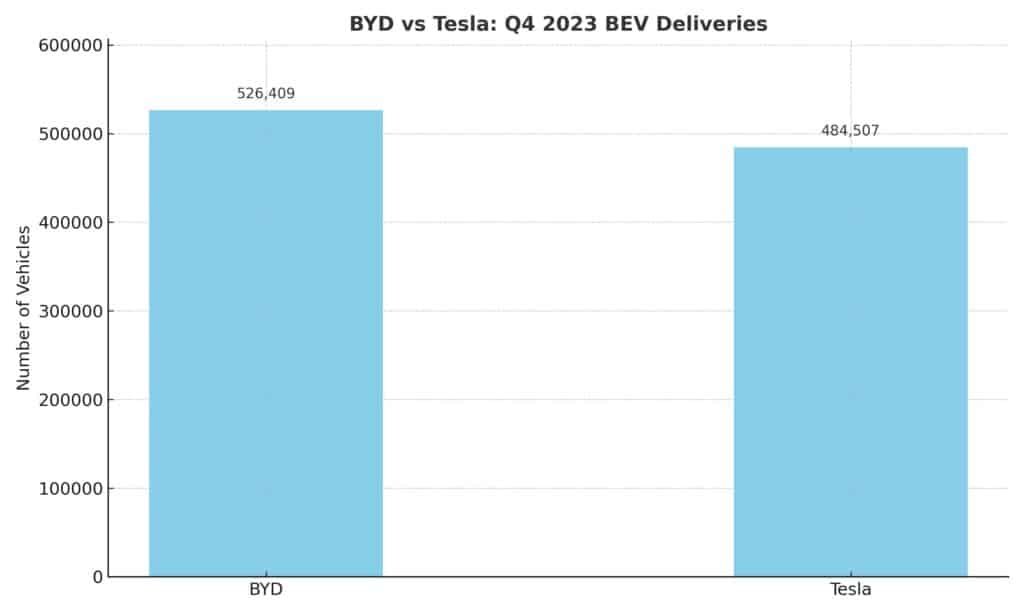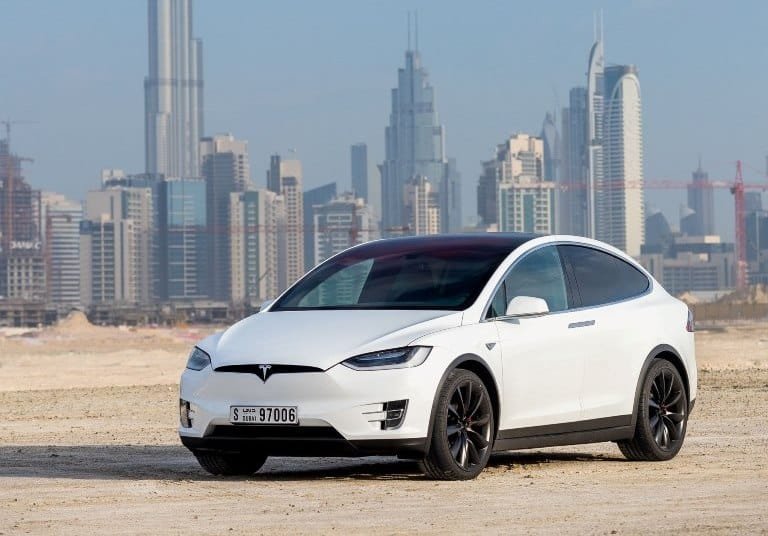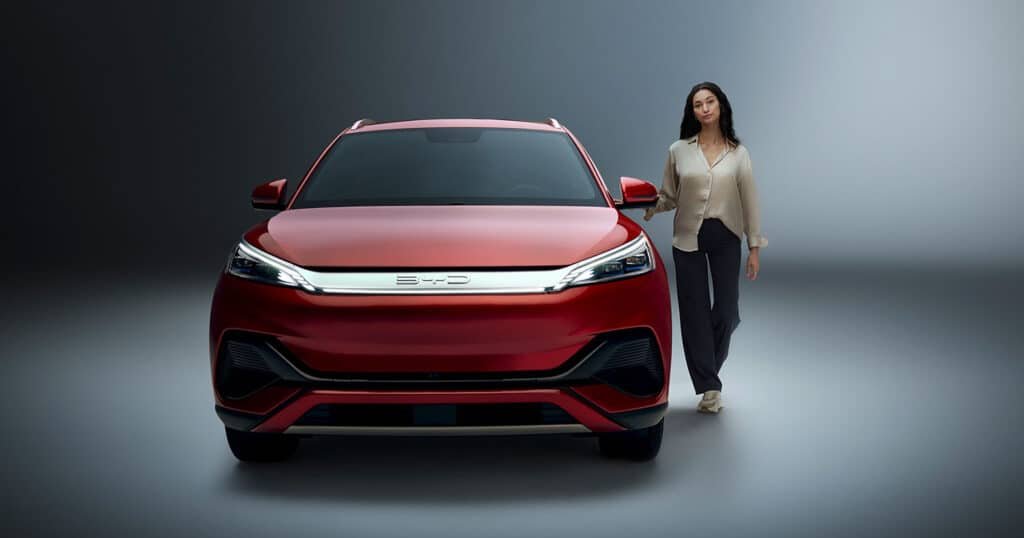In the fast-evolving world of electric vehicles (EVs), few names carry as much weight as Tesla. The American pioneer redefined the auto industry, introducing long-range EVs with over-the-air updates and autonomous driving tech. But in 2025, a new heavyweight contender is challenging that dominance — BYD (Build Your Dreams). Many are starting to call BYD the new Tesla, as the Chinese EV giant has not only overtaken Tesla in certain global sales figures but is reshaping how the world perceives electric mobility.
The question now being asked by analysts, auto enthusiasts, and investors alike: Is BYD really the new Tesla?
Let’s unpack this global power shift across innovation, sales, market presence, technology, pricing, and sustainability — and understand why BYD is commanding the spotlight in 2025.

1. BYD’s Meteoric Rise in Global EV Sales
In the final quarter of 2023, BYD officially overtook Tesla in global EV sales, delivering over 526,000 fully electric vehicles compared to Tesla’s 484,000. While Tesla still outsold BYD in the full-year 2023 BEV (battery electric vehicle) count, BYD’s consistent growth made headlines across the industry.
Key Statistics:
- BYD 2023 Q4 BEV deliveries: 526,409
- Tesla 2023 Q4 BEV deliveries: 484,507
- BYD total 2023 vehicle deliveries (including plug-in hybrids): 3.02 million
This marked a symbolic shift. A Chinese brand, once considered a low-end manufacturer, now leads the EV charge globally.

2. Tesla vs. BYD: Technological Innovation
Tesla is synonymous with innovation. From the advanced Autopilot system and Full Self-Driving (FSD) package to the 4680 battery cell technology, Tesla’s focus has always been pushing the tech envelope.
BYD, on the other hand, is quietly efficient. Its Blade Battery — considered one of the safest in the world — has become a core differentiator. The battery is designed to withstand nail penetration tests, high-temperature tests, and even crush tests, with minimal thermal runaway.
BYD Tech Highlights:
- Blade Battery (LFP chemistry): High safety, low cost, long cycle life
- e-Platform 3.0: Modular EV architecture optimising efficiency and range
- DM-i Hybrid system: Efficient plug-in hybrid powertrain used in cars like the BYD Qin and BYD Song Plus
Tesla Tech Highlights:
- Autopilot & FSD: Industry-leading autonomous software (still in beta)
- 4680 battery cell: Higher energy density and structural battery pack
- Supercharger Network: Over 50,000 high-speed chargers globally

3. Design, Branding, and Appeal
Tesla’s appeal lies in its minimalist, high-tech aesthetic. Its interiors are futuristic, centred around a single large screen. It sells exclusivity, status, and Silicon Valley cool.
BYD’s approach varies by region. In China, the brand offers everything from affordable city EVs like the Dolphin and Seagull, to luxury entries like the BYD Han and the high-performance Yangwang U8 — a luxury SUV with tank-like turning.
In the UAE, BYD has launched models tailored for regional preferences, with high-tech cabins, ambient lighting, and comfort-first interiors — far more traditionally luxurious than Tesla’s interiors.
BYD’s Denza brand and Yangwang sub-brand aim to capture Tesla’s Model S and Model X market with better interior finish and broader appeal.
4. Price & Accessibility: The Real Game Changer
BYD’s biggest edge over Tesla? Affordability.
- BYD Seagull: Launched at under AED 45,000 in China
- BYD Dolphin: Starts at AED 73,000 in global markets
- BYD Atto 3: Sold globally, including UAE, at AED 110,000–125,000
By contrast:
- Tesla Model 3 in the UAE: AED 174,990+
- Tesla Model Y: AED 204,990+
BYD’s ability to produce EVs at one-third the price of Tesla’s cheapest models is revolutionising the industry. While Tesla cuts prices in competitive markets, it cannot match BYD’s low cost structure, thanks to vertical integration and battery production in-house.

5. Global Expansion Strategy: Where the Two Giants Differ
Tesla’s strategy is global, but limited to premium buyers. It focuses on profitability and software integration.
BYD’s approach is different. It is flooding markets with EVs across all price points, entering over 50 countries in the last two years — including the UAE, Saudi Arabia, Australia, and key European markets like Germany and France.
BYD’s Global Moves:
- Opened EV production plants in Brazil, Thailand, Hungary, and Uzbekistan
- Dominating Latin America’s EV bus market
- Selling passenger cars aggressively in Europe, Africa, and the Middle East
Tesla’s Moves:
- Giga Berlin and Giga Shanghai ramping up production
- US-focused push on FSD and software subscriptions
- Major investments in AI and Dojo supercomputer
6. Software Superiority: Tesla Still Leads
One area where Tesla continues to dominate is software.
Tesla’s over-the-air updates add new features like games, safety improvements, or even power boosts. Its FSD suite — while still controversial — remains unmatched in capabilities.
BYD is catching up with OTA updates and improved infotainment, but lags behind in perception and UX.
Tesla Software Strengths:
- Autopilot + FSD Beta
- Tesla OS – Minimalist and powerful
- Tesla Vision (camera-only system for ADAS)
BYD’s Software Progress:
- DiLink infotainment system (solid, region-customised)
- OTA capability growing
- Localised software for each region

7. Charging Infrastructure
Tesla’s Supercharger network is a game-changer. It remains the fastest, most reliable, and most widespread EV charging network globally.
BYD does not operate its own exclusive charger network. Instead, it partners with local providers.
In the UAE:
- Tesla has a growing but brand-limited Supercharger presence
- BYD relies on DEWA, EV Labs, and other regional operators
In Europe, Tesla has opened some Superchargers to other brands. BYD benefits from this shift.
8. Sustainability & Supply Chain
Tesla has often faced criticism for cobalt sourcing and labour practices. It has committed to transitioning to LFP batteries in some models and using ethically sourced materials.
BYD’s Blade Battery uses LFP chemistry, which avoids cobalt entirely. The company also has its own battery production lines, which reduces third-party dependence.
BYD claims a cleaner production cycle — although China’s energy mix (coal-heavy) remains a question mark.
Both companies are working on closed-loop recycling.

9. UAE & GCC: Tesla vs. BYD Market Impact
The UAE has seen Tesla dominate early adoption. However, BYD’s recent entrance into the UAE and KSA is reshaping the EV landscape.
UAE Trends:
- BYD Atto 3 and Dolphin selling rapidly through Al-Futtaim
- Tesla Model Y & Model 3 now seen as mid-luxury options
- BYD seen as the smarter daily driver, especially among younger Emiratis and expats
In cities like Dubai and Abu Dhabi, where EV infrastructure is growing fast, BYD’s pricing and practicality are creating a paradigm shift. Government incentives and green building initiatives are accelerating EV penetration.
10. Investor Confidence & Market Valuation
Tesla’s market cap remains massive — over USD 500 billion as of Q2 2025.
BYD’s market cap, while smaller (approx. USD 100–150 billion), is steadily growing.
Tesla is treated as a tech stock. Investors value its AI, Dojo supercomputer, and energy products. BYD, while undervalued in Western markets, is gaining serious traction with fund managers in Asia and the Middle East.

Verdict: Is BYD the New Tesla?
Yes — and no.
BYD is the new Tesla in the sense that it:
- Leads global EV volumes
- Dominates the affordable EV space
- Has powerful battery tech (Blade Battery)
- Is expanding globally at an aggressive pace
But Tesla is still Tesla:
- The software king
- The innovator in self-driving tech
- With the most valuable EV brand equity globally

What’s Next?
- If BYD launches a compelling software ecosystem, it could fully rival Tesla
- If Tesla cannot reduce prices, it risks losing mass-market appeal
- Expect BYD to dominate Africa, the Middle East, Latin America
- Tesla may hold on to the luxury and software crown — for now
In short, BYD and Tesla are no longer the same kind of company. Tesla is a tech-luxury AI brand. BYD is an industrial giant building EVs for the world.
Final Thought:
If the 2010s belonged to Tesla, the 2020s might just be BYD’s decade.



